
Historic Splendor of Dublin Castle
Discover the historic allure and cultural vibrancy of Dublin Castle, a cornerstone of Irish heritage nestled in the heart of Dublin.
Nestled in the heart of Dublin, Dublin Castle offers a captivating journey through Ireland's rich history. As you step into its grounds, you're immediately transported back to the 13th century when the castle served as a crucial stronghold for the Anglo-Norman invaders. Today, the castle's blend of medieval towers and 18th-century Georgian architecture provides a stunning backdrop for both history enthusiasts and casual tourists alike. The castle grounds are a treasure trove of historical artifacts and stories. The State Apartments, once the residence of the British Viceroy, are adorned with opulent furnishings, intricate tapestries, and grand chandeliers, offering a glimpse into the lives of Irish nobility. The Gothic Chapel Royal, with its exquisite stained glass windows and carved wooden galleries, stands as a testament to Ireland's ecclesiastical artistry. Beyond the historical allure, Dublin Castle is a cultural hub. It hosts numerous events, from art exhibitions to musical performances, making it a dynamic part of Dublin's contemporary scene. The castle gardens, with their serene lawns and vibrant flower beds, provide a peaceful retreat from the bustling city streets. Whether you're exploring the medieval relics or enjoying a leisurely stroll through the gardens, Dublin Castle is an essential destination for anyone visiting Dublin.
Local tips in Dublin Castle
- Visit the State Apartments early in the day to avoid crowds.
- Check the event schedule ahead of time to catch any special exhibitions or performances.
- Wear comfortable shoes, as the castle grounds are extensive and require a fair amount of walking.
- Don't miss the Chester Beatty Library adjacent to the castle, which houses an impressive collection of manuscripts and artworks.
- Take a guided tour to gain deeper insights into the castle's history and significance.
Historic Splendor of Dublin Castle
Nestled in the heart of Dublin, Dublin Castle offers a captivating journey through Ireland's rich history. As you step into its grounds, you're immediately transported back to the 13th century when the castle served as a crucial stronghold for the Anglo-Norman invaders. Today, the castle's blend of medieval towers and 18th-century Georgian architecture provides a stunning backdrop for both history enthusiasts and casual tourists alike. The castle grounds are a treasure trove of historical artifacts and stories. The State Apartments, once the residence of the British Viceroy, are adorned with opulent furnishings, intricate tapestries, and grand chandeliers, offering a glimpse into the lives of Irish nobility. The Gothic Chapel Royal, with its exquisite stained glass windows and carved wooden galleries, stands as a testament to Ireland's ecclesiastical artistry. Beyond the historical allure, Dublin Castle is a cultural hub. It hosts numerous events, from art exhibitions to musical performances, making it a dynamic part of Dublin's contemporary scene. The castle gardens, with their serene lawns and vibrant flower beds, provide a peaceful retreat from the bustling city streets. Whether you're exploring the medieval relics or enjoying a leisurely stroll through the gardens, Dublin Castle is an essential destination for anyone visiting Dublin.
Iconic landmarks you can’t miss
Dublin Castle
Explore the architectural beauty and historical significance of Dublin Castle, a key landmark that reflects Ireland's rich past and vibrant culture.

Dubh Linn Garden
Explore the tranquil beauty of Dubh Linn Garden next to Dublin Castle, a perfect escape for relaxation, art, and nature lovers.

Drimnagh Medieval Castle
Discover the captivating history and stunning beauty of Drimnagh Medieval Castle, a true gem in Dublin's rich heritage.
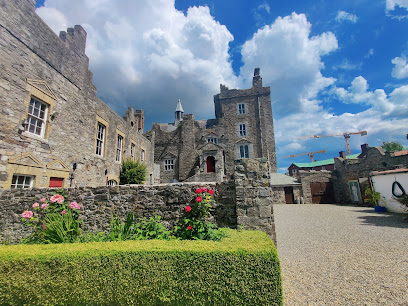
Old Dublin City Wall
Discover the Old Dublin City Wall, a historic landmark that reveals the medieval roots of Dublin amidst the vibrant atmosphere of The Liberties.

The Chapel Royal
Discover the stunning Gothic architecture and rich history of The Chapel Royal, a gem within Dublin Castle that showcases Ireland's royal past.
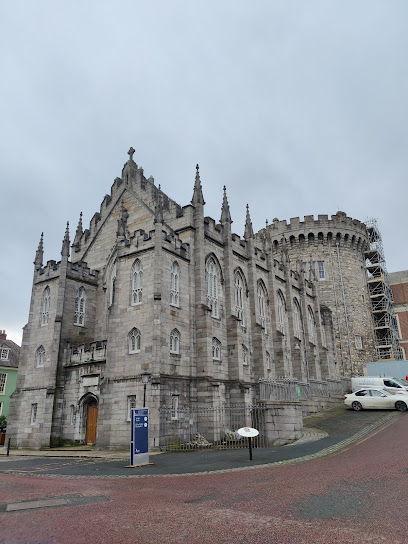
Dublin Castle Apartment
Explore Dublin Castle, a historical landmark showcasing Ireland's rich heritage through stunning architecture and captivating stories.

Unmissable attractions to see
Dubh Linn Garden
Discover the enchanting Dubh Linn Garden, a tranquil oasis nestled within the grounds of Dublin Castle, perfect for relaxation and exploration.

Dalkey Castle & Heritage Centre
Explore Dalkey Castle & Heritage Centre, a historic gem in Dublin, offering a captivating insight into Ireland's heritage and breathtaking coastal views.

Drimnagh Medieval Castle
Explore the enchanting Drimnagh Medieval Castle, a historical gem in Dublin with captivating architecture and beautiful gardens.

Ashtown Castle
Explore the historical Ashtown Castle in Phoenix Park, Dublin—where rich heritage meets stunning architecture and serene landscapes.

The Chapel Royal
Explore The Chapel Royal in Dublin Castle; a stunning historical landmark rich in culture and adorned with breathtaking architecture.

St. Patrick's Tower at The Digital Hub
Discover St. Patrick's Tower, a historic landmark in Dublin's Liberties, embodying the city's rich heritage and vibrant culture.

Sandycove Castle
Explore Sandycove Castle, a historical gem in Dublin, boasting stunning architecture and scenic coastal views that narrate Ireland's rich history.

Essential places to dine
The Bull & Castle
Experience the ultimate steak indulgence at The Bull & Castle in Dublin – where quality meets tradition in every bite.

Toscana City Centre Italian Restaurant
Experience authentic Italian flavors at Toscana City Centre Restaurant in Dublin's bustling Temple Bar district.

Brasserie Sixty6 Restaurant
Experience modern European dining at Brasserie Sixty6 in Dublin - where local flavors meet culinary excellence.
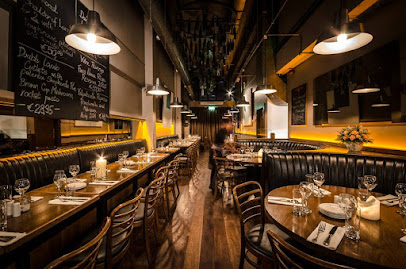
Chez Max
Experience authentic French cuisine at Chez Max, where every dish tells a story and each visit feels like a mini-vacation in Paris.

Rustic Stone by Dylan McGrath
Experience innovative modern Irish cuisine at Rustic Stone by Dylan McGrath in Dublin's vibrant heart.

La Maison
Experience the finest in modern French cuisine at La Maison in Dublin—where every dish tells a story.

La Caverna Restaurant and Wine Bar
Discover the exquisite flavors of Italian and Mediterranean cuisine at La Caverna Restaurant and Wine Bar in Dublin's lively Temple Bar.

Smokin Bones Castle Market
Discover Dublin's premier BBQ destination at Smokin Bones Castle Market - where smoky flavors meet vibrant dining experiences.

Silk Road Cafe
Discover diverse global flavors at Silk Road Cafe in Dublin's Chester Beatty Library - a culinary haven amidst cultural treasures.

Bottega Toffoli
Discover Bottega Toffoli: A charming Italian restaurant in Dublin serving authentic dishes made with fresh ingredients.

Markets, malls and hidden boutiques
The Temple Bar Trading Company
Discover authentic Irish gifts and souvenirs at The Temple Bar Trading Company, a must-visit shop in Dublin's historic Temple Bar district.

Søstrene Grene
Explore Søstrene Grene in Dublin for unique home decor, art supplies, and creative gifts that inspire your artistic side.

The Irish Store
Discover The Irish Store in Dublin, where authentic Irish goods, clothing, and jewelry await to enrich your travel experience.

designist
Explore Designist: Dublin's creative gift shop featuring unique souvenirs, stylish decor, and local art treasures.

Needful Things
Explore Dublin's hidden gem, Needful Things, where antiques and rare books create a nostalgic adventure for every visitor.
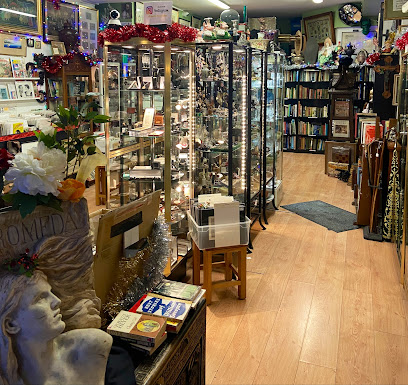
Dublin Vintage shop
Explore the charm of vintage fashion at Dublin Vintage Shop, the ultimate destination for unique clothing and timeless treasures in the heart of Dublin.

Irish Design Shop
Explore the essence of Irish craftsmanship at the Irish Design Shop, where every item tells a story of creativity and culture.

Durt Co
Discover Durt Co in Dublin's Temple Bar - your destination for unique vintage clothing and a sustainable fashion experience.

The shop of nice things
Explore Dublin's hidden gem, The Shop of Nice Things, where unique gifts and charming home goods await every discerning traveler.
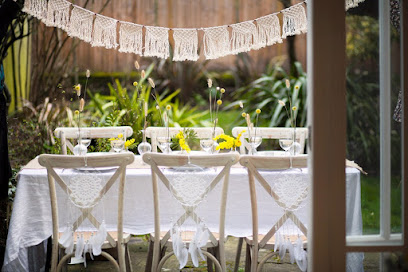
Golly Gosh Vintage Boutique Dublin
Discover unique vintage treasures at Golly Gosh Vintage Boutique in Dublin's vibrant Temple Bar, a must-visit for fashion lovers and treasure hunters.

Essential bars & hidden hideouts
The Temple Bar Pub
Discover the iconic Temple Bar Pub in Dublin, where history, culture, and lively entertainment come together for an unforgettable experience.
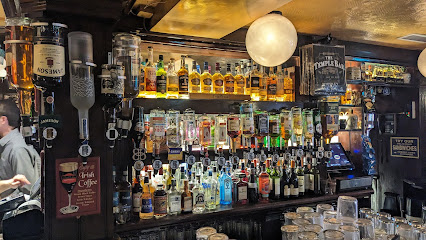
The Church Café Bar
Discover the unique blend of history and modern dining at The Church Café Bar in Dublin, where every meal is a memorable experience.

Porterhouse Temple Bar
Explore the essence of Dublin at Porterhouse Temple Bar, a lively gastropub offering craft beers, delightful cuisine, and live music in the heart of Temple Bar.
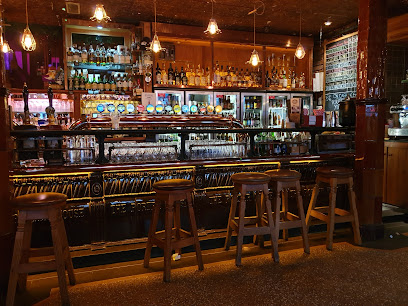
Bad Bobs Temple Bar
Discover the vibrant culture and nightlife at Bad Bobs Temple Bar, Dublin's premier live music bar and grill in the heart of Temple Bar.

The Stags Head
Experience the heart of Dublin at The Stags Head, a historic pub offering delicious food, local drinks, and vibrant atmosphere.

The Palace Bar
The Palace Bar: A historic Irish pub in Temple Bar, Dublin, offering an extensive whiskey selection and a vibrant atmosphere.

Grogans
Experience the authentic Irish pub atmosphere at Grogans, where great drinks and vibrant conversations come together in the heart of Dublin.

The Bar With No Name
Experience Dublin's vibrant nightlife at The Bar With No Name, a cocktail bar renowned for its creative drinks and welcoming atmosphere.

Vintage Cocktail Club
Discover the Vintage Cocktail Club in Dublin's Temple Bar - where timeless cocktails meet a vibrant atmosphere.

The Big Romance
Experience the vibrant nightlife of Dublin at The Big Romance, the ultimate cocktail bar and live music venue for unforgettable evenings.

Local Phrases
-
- HelloDia duit
[dee-uh gwitch] - GoodbyeSlán
[slawn] - YesTá
[taw] - NoNíl
[neel] - Please/You're welcomeLe do thoil
[leh duh hull] - Thank youGo raibh maith agat
[guh rev mah agut] - Excuse me/SorryMaith thú
[mah hoo] - How are you?Conas atá tú?
[kun-us ah-taw too] - Fine. And you?Tá mé go maith. Agus tú?
[taw may guh mah. ah-gus too] - Do you speak English?An labhraíonn tú Béarla?
[ahn low-ree-un too bay-er-lah] - I don't understandNí thuigim
[nee hug-im]
- HelloDia duit
-
- I'd like to see the menu, pleaseBa mhaith liom an mianú
[bah wah lyum on mee-an-oo] - I don't eat meatNí ithim feoil
[nee ih-im foh-ul] - Cheers!Sláinte!
[slawn-cheh] - I would like to pay, pleaseBa mhaith liom íoc, le do thoil
[bah wah lyum ee-uck, leh duh hull]
- I'd like to see the menu, pleaseBa mhaith liom an mianú
-
- Help!Cabhraigh!
[cah-ree] - Go away!Imigh uait!
[ih-mee wayt] - Call the Police!Glan an Garad!
[glahn ahn gah-rah] - Call a doctor!Glan dochtúir!
[glahn duhk-too-ir] - I'm lostTáim caillte
[tawm kye-il-cheh] - I'm illTá mé tinn
[taw may tin]
- Help!Cabhraigh!
-
- I'd like to buy...Ba mhaith liom ceannach...
[bah wah lyum kyawn-ukh] - I'm just lookingNíl ach ag feachaint
[neel okh egg fakh-int] - How much is it?Cé mhéad atá air?
[kay vay-ud ah-taw air] - That's too expensiveTá sé ró-dhaor
[taw shay row-gheer] - Can you lower the price?An féidir leat an praghas a laghdú?
[ahn fay-dir lat ahn prah-gus ah leh-goo]
- I'd like to buy...Ba mhaith liom ceannach...
-
- What time is it?Cén t-am é?
[kayn tahm ay] - It's one o'clockTá sé a haon a chlog
[taw shay ah hayn ah klohg] - Half past (10)Leathuair tar éis (10)
[lah-hoo-ir tar aysh (10)] - MorningMaidin
[mah-djin] - AfternoonTráthnóna
[traw-noh-nah] - EveningTráthnóna
[traw-noh-nah] - YesterdayInné
[in-nyeh] - TodayInniu
[in-yoo] - TomorrowAmárach
[ah-maw-rahk] - 1A haon
[ah hayn] - 2Dó
[doh] - 3Trí
[tree] - 4Ceathair
[cah-her] - 5Cúig
[coo-ig] - 6Sé
[shay] - 7Seacht
[shokht] - 8Ocht
[ukht] - 9Naoi
[nee] - 10Deich
[dyeh]
- What time is it?Cén t-am é?
-
- Where's a/the...?Cá bhfuil an...?
[kaw will ahn] - What's the address?Cad é an seoladh?
[kahd ay ahn shoh-lah] - Can you show me (on the map)?An féidir leat dom a thaispeáint (ar an léarscáil)?
[ahn fay-dir lat dum ah hah-shpaynt (ar ahn layr-skawl)] - When's the next (bus)?Cathain atá an chéad (bus)?
[kah-hain ah-taw ahn khay-ad (bus)] - A ticket (to ....)Ticead (go dtí ....)
[tick-ad (guh jee ....)]
- Where's a/the...?Cá bhfuil an...?
History of Dublin Castle
-
Dublin Castle was established in the early 13th century, around 1204, as a defensive fortification by the Anglo-Normans. Originally built as a wooden structure, the castle was later rebuilt in stone. It served as the center of English rule in Ireland for centuries, symbolizing the power and authority of the crown over the Irish populace.
-
Over the centuries, Dublin Castle evolved from a military fortress to a royal palace and administrative center. It hosted many significant events, including the signing of the Treaty of Dublin in 1641 and the Anglo-Irish Treaty in 1921, which led to the establishment of the Irish Free State. The castle has witnessed numerous political and social changes, reflecting Ireland’s turbulent history.
-
Dublin Castle is a blend of medieval and modern architecture. The most notable features include the Record Tower, the last remaining structure from the original castle, and the State Apartments, which were added in the 18th century. The castle has undergone various renovations, with the Victorian-style interiors showcasing the transformation of Irish society and governance.
-
Today, Dublin Castle is not only a historical site but also a vibrant cultural venue. It hosts state functions, including presidential inaugurations and diplomatic receptions. The castle grounds are open to the public, allowing visitors to explore the gardens and learn about its rich history. The nearby Chester Beatty Library, housed within the castle, offers collections of manuscripts, rare books, and art, further enriching the cultural landscape of Dublin.
-
The castle was a focal point during the struggle for Irish independence. The last Governor-General of the Irish Free State, Tim Healy, was the last to reside in the castle. In 1922, it was handed over to the Irish government, marking the end of British rule in Ireland. This event is celebrated as a significant milestone in Irish history, symbolizing the transition from colonial governance to self-rule.
Dublin Castle Essentials
-
Dublin Castle is centrally located in Dublin, making it easily accessible from various neighborhoods. From Dublin Airport, you can take the Airlink Express bus (Route 747 or 757) directly to the city center. Alternatively, taxis are available, and the ride takes around 30 minutes. If you are coming from other neighborhoods, the Luas (tram) has nearby stops, and several bus routes serve the area. The closest bus stop is on Dame Street, just a short walk from the castle.
-
Dublin Castle is located in a pedestrian-friendly area, making it easy to explore on foot. The Luas tram system and Dublin Bus provide convenient public transportation options for traveling further afield. Bicycles can be rented from Dublin Bike stations, with several located near the castle. Taxis and rideshare services like Uber are also available for quicker trips around the city.
-
Dublin Castle is generally safe for tourists, but standard precautions are advisable. Avoid walking alone late at night in less populated areas, particularly in the north inner city. Areas such as O'Connell Street and parts of the north side can have higher crime rates, mainly petty theft. Always keep an eye on personal belongings, especially in crowded areas.
-
In case of an emergency, dial 112 or 999 for immediate assistance. The local police station is located nearby, and medical facilities are accessible throughout the city. It is advisable to have travel insurance that covers medical emergencies. For non-critical health issues, pharmacies are available in the vicinity.
-
Fashion: Do dress appropriately when visiting Dublin Castle, especially for formal events. Avoid overly casual attire. Religion: Do respect the historical significance of the site and refrain from disruptive behavior. Public Transport: Do follow local etiquette, such as giving up your seat for those in need. Don't engage in loud conversations. Greetings: Do greet locals with a friendly smile and eye contact. Eating & Drinking: Do try local Irish dishes in nearby restaurants. Don't consume food or drink while walking through the castle grounds.
-
To experience Dublin Castle like a local, consider attending a guided tour to learn about its rich history. Visit the Chester Beatty Library within the castle grounds, which often hosts exhibitions and has a lovely café. Explore the nearby gardens and stop by local pubs for traditional Irish music. Engaging with locals in nearby cafés can provide unique insights into the culture and daily life in Dublin.
Nearby Cities to Dublin Castle
-
Things To Do in Bray
-
Things To Do in Drogheda
-
Things To Do in Kilkenny
-
Things To Do in Athlone
-
Things To Do in Wexford
-
Things To Do in Port Erin
-
Things To Do in Port St Mary
-
Things To Do in Waterford
-
Things To Do in Castletown
-
Things To Do in Ballasalla
-
Things To Do in Belfast
-
Things To Do in Peel
-
Things To Do in Douglas
-
Things To Do in Onchan
-
Things To Do in Kirk Michael










